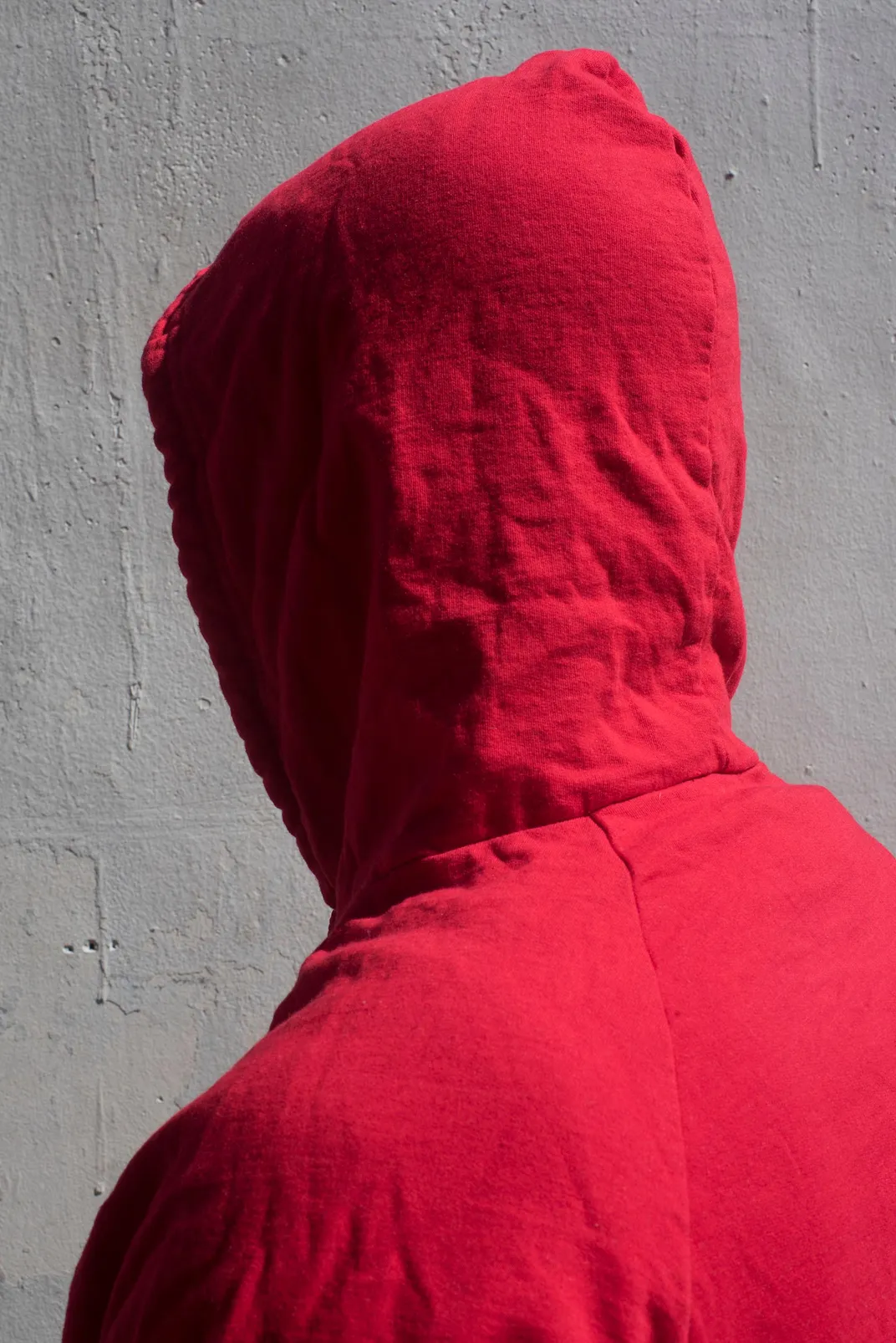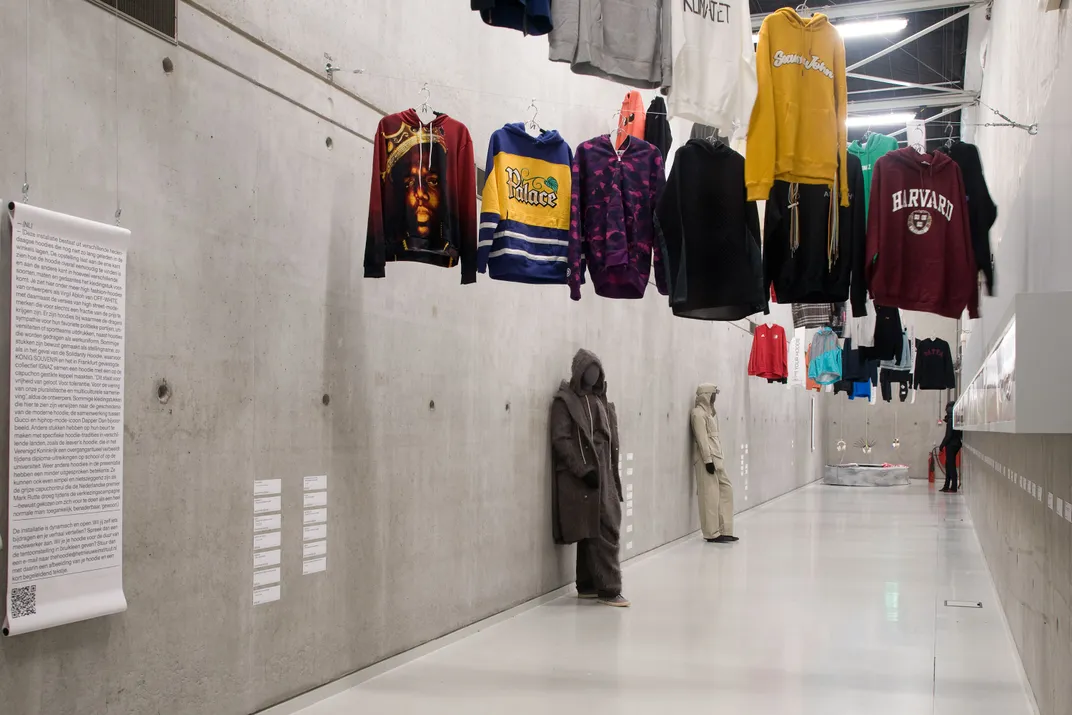Unraveling the Tangled History of the Hoodie
Over the years, the oft-politicized garment has straddled the worlds of sports, street culture, Silicon Valley and high fashion
/https://tf-cmsv2-smithsonianmag-media.s3.amazonaws.com/filer/84/4e/844eb24d-3ad4-467d-a9fe-a6b16a5f4349/devan_shimoyama.jpg)
Just before an unarmed black teenager named Trayvon Martin was shot and killed by a neighborhood watch captain in 2012, his attacker identified him to police as a “suspicious guy” wearing “a dark hoodie, a gray hoodie.”
During the national outpouring of grief and rage that followed Martin’s death, the hooded sweatshirt became a symbol of solidarity and protest. Basketball player LeBron James tweeted a photo of his teammates wearing hoodies alongside the hashtag #WeAreTrayvonMartin, and the organizers of New York City’s Million Hoodies March said, “A black person in a hoodie isn't automatically ‘suspicious.’ Let's put an end to racial profiling!”
These responses offered a stark manifestation of the convoluted history of the hoodie—a garment that has straddled the worlds of sports, street culture, Silicon Valley and high fashion, representing something as benign as affiliation with a football team or as charged as racial inequality. Now, Caroline Elbaor reports for artnet News, the hoodie and its socio-political significance are the subject of an innovative exhibition at the Het Nieuwe Instituut in Rotterdam.
Titled simply “The Hoodie,” the show brings together photographs, film footage, music, magazines and 60 hoodies, tracing the evolution of a sweatshirt that “tells many stories that define our times—tales of social inequality, youth culture, subculture, police brutality, racism, privacy, fear and, in turn, style,” according to the institute’s website.
The first hoodies were likely made by Champion Products in the 1930s. The apparel was marketed to athletes and laborers in need of extra protection from the cold.
“Employees at cold-storage warehouses and tree surgeons working through the winter were calling for a garment that would provide more warmth than their long underwear,” writes Denis Wilson for Rolling Stone. “Meanwhile Champion was working directly with high schools to determine their apparel needs, eventually making big double-thickness hooded sweatshirts that football and track athletes wore on the sidelines in bad weather.”
The hoodie’s association with sports endured through the 1970s—think Rocky Balboa running up the steps of the Philadelphia Museum of Art—when it also became a “streetwear staple,” according to Elizabeth Paton of the New York Times. Among hip-hop artists, skaters and punks, the hoodie was a symbol of defiance and rebellion.
“There was and is a theater of the hood: pulling it up with a flourish, tugging it down to settle in its energetic slouch,” Troy Patterson wrote in a 2016 New York Times article. “The hood frames a dirty look, obscures acne and anxiety, masks headphones in study hall, makes a cone of solitude that will suffice for an autonomous realm.”
Because of their ability to obscure the face, hoodies are often regarded with suspicion. But the sweatshirts have also found their way into mainstream culture, touted by tech moguls and fashion designers alike.
The hoodie is now ubiquitous, but “to wear one with unthinking confidence tends to be inextricably tied up with privilege,” Lou Stoppard, curator of the exhibition, tells Paton. “By giving visitors that platform, should they want it, we can aim to make visible the individuals underneath.”
Multiple artists have contributed hoodie-themed works to the show: Among others, the list includes Devan Shimoyama, who created a sweatshirt covered in blossoming flowers, and Angelica Falkeling, whose mixed-media installation focuses on the environmental and social impacts of the cotton industry, according to Elbaor. The show also explores how the hoodie—which already carries sinister connotations in certain contexts—may become even more controversial with the rise of surveillance monitoring.
“To want privacy, anonymity, is inherently suspicious, and an affront to surveillance culture,” Stoppard tells Paton.
By unpacking varied and often conflicting cultural attitudes toward the hoodie, Het Nieuwe Instituut hopes to ease the public’s negative perceptions of the garment. The institution is, in fact, extending a warm welcome to hoodie fans. According to Paton, anyone who wears a hoodie to the show gets in for free.
“The Hoodie” is on view at the Het Nieuwe Instituut in Rotterdam through April 12, 2020.


